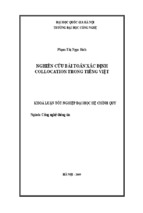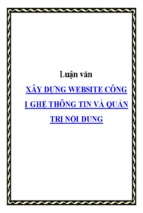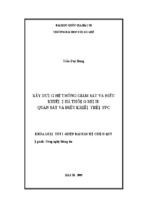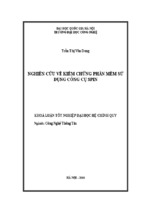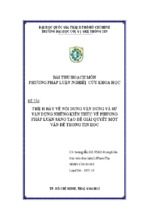Visit us at
www.syngress.com
Syngress is committed to publishing high-quality books for IT Professionals and
delivering those books in media and formats that fit the demands of our customers. We are also committed to extending the utility of the book you purchase
via additional materials available from our Web site.
SOLUTIONS WEB SITE
To register your book, visit www.syngress.com/solutions. Once registered, you can
access our
[email protected] Web pages. There you will find an assortment
of value-added features such as free e-booklets related to the topic of this book,
URLs of related Web site, FAQs from the book, corrections, and any updates from
the author(s).
ULTIMATE CDs
Our Ultimate CD product line offers our readers budget-conscious compilations of
some of our best-selling backlist titles in Adobe PDF form. These CDs are the perfect
way to extend your reference library on key topics pertaining to your area of expertise, including Cisco Engineering, Microsoft Windows System Administration,
CyberCrime Investigation, Open Source Security, and Firewall Configuration, to
name a few.
DOWNLOADABLE EBOOKS
For readers who can’t wait for hard copy, we offer most of our titles in downloadable Adobe PDF form. These eBooks are often available weeks before hard copies,
and are priced affordably.
SYNGRESS OUTLET
Our outlet store at syngress.com features overstocked, out-of-print, or slightly hurt
books at significant savings.
SITE LICENSING
Syngress has a well-established program for site licensing our ebooks onto servers
in corporations, educational institutions, and large organizations. Contact us at
[email protected] for more information.
CUSTOM PUBLISHING
Many organizations welcome the ability to combine parts of multiple Syngress
books, as well as their own content, into a single volume for their own internal use.
Contact us at
[email protected] for more information.
4 FREE BOOKLETS
YOUR SOLUTIONS MEMBERSHIP
How to Cheat at
Securing a
Wireless
Network
Chris Hurley
Brian Baker
Christian Barnes
Tony Bautts
Darren Bonawitz
Randy Hiser
Jan Kanclirz Jr.
Andy McCullough
Jeffrey A. Wheat
Syngress Publishing, Inc., the author(s), and any person or firm involved in the writing, editing, or production (collectively “Makers”) of this book (“the Work”) do not guarantee or warrant the results to be
obtained from the Work.
There is no guarantee of any kind, expressed or implied, regarding the Work or its contents.The Work is
sold AS IS and WITHOUT WARRANTY.You may have other legal rights, which vary from state to
state.
In no event will Makers be liable to you for damages, including any loss of profits, lost savings, or other
incidental or consequential damages arising out from the Work or its contents. Because some states do not
allow the exclusion or limitation of liability for consequential or incidental damages, the above limitation
may not apply to you.
You should always use reasonable care, including backup and other appropriate precautions, when working
with computers, networks, data, and files.
Syngress Media®, Syngress®, “Career Advancement Through Skill Enhancement®,” “Ask the Author
UPDATE®,” and “Hack Proofing®,” are registered trademarks of Syngress Publishing, Inc. “Syngress:The
Definition of a Serious Security Library”™, “Mission Critical™,” and “The Only Way to Stop a Hacker is
to Think Like One™” are trademarks of Syngress Publishing, Inc. Brands and product names mentioned
in this book are trademarks or service marks of their respective companies.
KEY
SERIAL NUMBER
001
002
003
004
005
006
007
008
009
010
HJIRTCV764
PO9873D5FG
829KM8NJH2
HJPOOLL783
CVPLQ6WQ23
VBP965T5T5
HJJJ863WD3E
2987GVTWMK
629MP5SDJT
IMWQ295T6T
PUBLISHED BY
Syngress Publishing, Inc.
800 Hingham Street
Rockland, MA 02370
How to Cheat at Securing a Wireless Network
Copyright © 2006 by Syngress Publishing, Inc. All rights reserved. Except as permitted under the
Copyright Act of 1976, no part of this publication may be reproduced or distributed in any form or by
any means, or stored in a database or retrieval system, without the prior written permission of the publisher, with the exception that the program listings may be entered, stored, and executed in a computer
system, but they may not be reproduced for publication.
1 2 3 4 5 6 7 8 9 0
ISBN: 1597490873
Publisher: Andrew Williams
Acquisitions Editor: Erin Heffernan
Technical Editor: Chris Hurley
Cover Designer: Michael Kavish
Page Layout and Art: Patricia Lupien
Copy Editor: Darlene Bordwell
Indexer: Nara Wood
Distributed by O’Reilly Media, Inc. in the United States and Canada.
For information on rights, translations, and bulk sales, contact Matt Pedersen, Director of Sales and Rights,
at Syngress Publishing; email
[email protected] or fax to 781-681-3585.
Acknowledgments
Syngress would like to acknowledge the following people for their kindness and support in making this book possible.
Syngress books are now distributed in the United States and Canada by O’Reilly
Media, Inc.The enthusiasm and work ethic at O’Reilly are incredible, and we would
like to thank everyone there for their time and efforts to bring Syngress books to
market:Tim O’Reilly, Laura Baldwin, Mark Brokering, Mike Leonard, Donna Selenko,
Bonnie Sheehan, Cindy Davis, Grant Kikkert, Opol Matsutaro, Steve Hazelwood, Mark
Wilson, Rick Brown,Tim Hinton, Kyle Hart, Sara Winge, Peter Pardo, Leslie Crandell,
Regina Aggio Wilkinson, Pascal Honscher, Preston Paull, Susan Thompson, Bruce
Stewart, Laura Schmier, Sue Willing, Mark Jacobsen, Betsy Waliszewski, Kathryn
Barrett, John Chodacki, Rob Bullington, Kerry Beck, Karen Montgomery, and Patrick
Dirden.
The incredibly hardworking team at Elsevier Science, including Jonathan Bunkell, Ian
Seager, Duncan Enright, David Burton, Rosanna Ramacciotti, Robert Fairbrother,
Miguel Sanchez, Klaus Beran, Emma Wyatt, Krista Leppiko, Marcel Koppes, Judy
Chappell, Radek Janousek, Rosie Moss, David Lockley, Nicola Haden, Bill Kennedy,
Martina Morris, Kai Wuerfl-Davidek, Christiane Leipersberger,Yvonne Grueneklee,
Nadia Balavoine, and Chris Reinders for making certain that our vision remains
worldwide in scope.
David Buckland, Marie Chieng, Lucy Chong, Leslie Lim, Audrey Gan, Pang Ai Hua,
Joseph Chan, June Lim, and Siti Zuraidah Ahmad of Pansing Distributors for the
enthusiasm with which they receive our books.
David Scott, Tricia Wilden, Marilla Burgess, Annette Scott, Andrew Swaffer, Stephen
O’Donoghue, Bec Lowe, Mark Langley, and Anyo Geddes of Woodslane for distributing
our books throughout Australia, New Zealand, Papua New Guinea, Fiji,Tonga, Solomon
Islands, and the Cook Islands.
v
Technical Editor
and Contributor
Chris Hurley (Roamer) is a Senior Penetration Tester working in the
Washington, DC area. He is the founder of the WorldWide WarDrive, a
four-year effort by INFOSEC professionals and hobbyists to generate
awareness of the insecurities associated with wireless networks and is the
lead organizer of the DEF CON WarDriving Contest.
Although he primarily focuses on penetration testing these days,
Chris also has extensive experience performing vulnerability assessments,
forensics, and incident response. Chris has spoken at several security conferences and published numerous whitepapers on a wide range of
INFOSEC topics. Chris is the lead author of WarDriving: Drive, Detect,
Defend, and a contributor to Aggressive Network Self-Defense, InfoSec Career
Hacking, OS X for Hackers at Heart, and Stealing the Network: How to Own
an Identity. Chris holds a bachelor’s degree in computer science. He lives
in Maryland with his wife Jennifer and their daughter Ashley.
Contributing Authors
Brian Baker is a computer security penetration tester for the U.S. government, located in the Washington, D.C., area. Brian has worked in
almost every aspect of computing, from server administration to network
infrastructure support and now security. Brian has been focusing his work
on wireless technologies and current security technologies.
vii
I’d like to thank my wife,Yancy, and children, Preston, Patrick,
Ashly, Blake and Zakary. A quick shout out to the GTN lab dudes, Chris,
Mike, and Dan.
Chapter 2 is dedicated to my mother, Harriet Ann Baker, for the
love, dedication, and inspiration she gave her three kids, raising us as a
single parent. Rest in peace, and we’ll see you soon...
Christian Barnes (CCNA, CCDA, MCSE, CNA, A+) is a Network
Consultant for Lucent Technologies in Overland Park, KS. His career in
the IT industry began with supporting NT and NetWare servers and NT
workstations for a large banking company in Western New York. It
quickly evolved into support of high-level engineers and LAN and WAN
administrators as they attempted to troubleshoot and design their networks, and then on to consulting. Chris has a wife and four sons.
Tony Bautts is a Senior Security Consultant with Astech Consulting. He
currently provides security advice and architecture for clients in the San
Francisco Bay area. His specialties include intrusion detection systems, firewall design and integration, post-intrusion forensics, bastion hosting, and
secure infrastructure design.Tony’s security experience has led him to
work with Fortune 500 companies in the United States as well as two
years of security consulting in Japan. He is also involved with the
BerkeleyWireless.net project, which is working to build neighborhood
wireless networks for residents of Berkeley, CA.
Darren Bonawitz is a Network Systems Engineer with Lucent
Worldwide Service. Darren started his career pursuing entrepreneurial
endeavors in electronic commerce. In January 2001, he joined Lucent
Worldwide Service as a Network Systems Engineer, bringing his knowledge of the desktop platform and a general understanding of a broad range
of technologies in areas such as remote access, ATM, frame relay, and wireless. In addition, his background includes consulting with universities and
corporate clients on a pre- and post-sales basis, business/technology planning, and a proven dedication to customer service. He studied Electrical
viii
Engineering with an emphasis in Communication Systems at Kansas State
University. In 2000, Darren was nominated for Kansas Young Entrepreneur
of the Year, and he was also recently recognized by The Los Angeles Times
for commitment to online customer service.
Anthony Bruno (CCIE #2738, CCDP, CCNA-WAN, MCSE, NNCSS,
CNX-Ethernet) is a Principal Consultant with Lucent Worldwide
Services. As a consultant, he has worked with many customers in the
design, implementation, and optimization of large-scale, multiprotocol networks. Anthony has worked on the design of wireless networks, voice over
technologies, and Internet access. Formerly, he worked as an Air Force
Captain in network operations and management. While in this role, he
implemented wireless LANs on the base network. Anthony received his
master’s degree in Electrical Engineering from the University of MissouriRolla in 1994 and his B.S. in Electrical Engineering from the University
of Puerto Rico-Mayaguez in 1990. He is the coauthor of CCDA Exam
Certification Guide and has performed technical reviews for several Cisco
professional books.
Dan Connelly (MSIA, GSNA) is a Senior Penetration Tester for a
Federal Agency in the Washington, D.C., area. He has a wide range of
information technology experience, including Web applications and
database development, system administration, and network engineering.
For the last five years he has been dedicated to the information security
industry, providing penetration testing, wireless audits, vulnerability assessments, and network security engineering for many federal agencies. Dan
holds a Bachelor of Science degree in Information Systems from Radford
University and a Master of Science degree in Information Assurance from
Norwich University.
I would like to thank Chris Hurley, Mike Petruzzi, Brian Baker, and
everyone at GTN and CMH for creating such an enjoyable work environment.
Thanks to everyone at ERG for letting me do what I love to do and still paying
me for it.
I would also like to thank my mom and dad for their unconditional support, wisdom, and guidance; my brother for his positive influence; and my sister for
ix
always being there. I would particularly like to thank my beautiful wife, Alecia, for
all her love and support throughout the years and for blessing our family with our
son, Matthew Joseph. He is truly a gift from God and I couldn’t imagine life
without him.
Chuck Fite is a Consultant currently working for Iconixx Systems
Engineering on Sprint ION. He has been a technical writer, a test technician, and a business analyst in the computer and telecommunications
industries for the past eight years. Chuck received a B.S. in Physics and an
M.A. in Rhetoric and Professional Communication from Iowa State
University.
Randy Hiser is a Senior Network Engineer for Sprint’s Research,
Architecture & Design Group, with design responsibilities for home distribution and DSL self-installation services for Sprint’s Integrated On
Demand Network. He is knowledgeable in the areas of multimedia services and emerging technologies, has installed and operated fixed wireless
MMDS facilities in the Middle East, and has patented network communication device identification in a communications network for Sprint.
Randy lives in Overland Park, KS, with his wife, Deborah, and their children, Erin, Ryan, Megan, Jesse, and Emily.
Jan Kanclirz Jr. (CCIE #12136-Security, CCSP, CCNP, CCIP, CCNA,
CCDA, INFOSEC Professional) is a Senior Network Information
Security Engineer working for IBM Global Services. Currently, he is
responsible for strategic and technical evolution of a large multicustomer/multidata center networks and their security environment. Jan specializes in multivendor, hands-on implementations and architectures of
network technologies such as routers, switches, firewalls, intrusion sensors,
content networking, and wireless networks. Beyond network design and
engineering, Jan’s background includes extensive experience with Linux
and BSD administration and security implementations.
x
Andy McCullough (BSEE, CCNA, CCDA) has been in network consulting for over seven years. He is currently working at Lucent Enhanced
Services and Sales as a Distinguished Member of the Consulting Staff.
Andy has done architecture and design work for several global customers
of Lucent Technologies, including Level 3 Communications, Sprint,
MCI/WorldCom, the London Stock Exchange, and British Telecom. His
areas of expertise include network architecture and design, IP routing and
switching, and IP Multicast. Prior to working for Lucent, Andy ran a consulting company and a regional ISP.
Andy is coauthor of Building Cisco Remote Access Networks
(Syngress Publishing, ISBN: 1-928994-13-X). He is also an assistant professor teaching networking classes at a community college in Overland
Park, KS.
Mike Petruzzi is a senior penetration tester in the Washington, D.C.,
area. Mike has performed a variety of tasks and assumed multiple responsibilities in the information systems arena. He has been responsible for performing the role of Program Manager and InfoSec Engineer, System
Administrator and Help Desk Technician, and Technical Lead for companies such as IKON and SAIC. Mike also has extensive experience performing risk assessments, vulnerability assessments, and certification and
accreditation. Mike’s background includes positions as a brewery representative, liquor salesman, and cook at a greasy spoon diner.
Jackie Tucker is a Kansas-based Technical Consultant with over 14 years’
experience in technical writing, interface design, and Web development.
She has participated in all phases of software design at several software
companies, including a long tenure at Informix Software, Inc., worked
extensively on Sprint ION, and is currently consulting in the network
division of Sprint Corporation. She graduated with honors from St. Mary
College with a B.S. in Computer Science and from Baker University with
a M.S. in Management. After work, Jackie spends as much time as possible
with her husband, Bob, and her two little girls, Sarah and Jessie, in a
sports-filled household.
xi
Jeffrey A. Wheat (Lucent WaveLAN Wireless Certification, FORE ATM
Certification) is a Principal Member of the Consulting Staff at Lucent
Worldwide Services. He currently provides strategic direction and architectural design to Lucent Service Provider and Large Enterprise customers. His specialties include convergence and wireless architectures, and
he is an ATM and Testing Methodology Subject Matter Expert within
Lucent. Jeff ’s background with Lucent includes design engagements with
Metricom, Sprint ION, Sprint PCS, Raytheon, and Marathon Oil. Prior
to Lucent, he spent 11 years working for the U.S. Intelligence Agencies as
a Network Architect and Systems Engineer. Jeff graduated from the
University of Kansas in 1986 with a B.S. in Computer Science and currently resides in Kansas City with his wife, Gabrielle, and their two children, Madison and Brandon.
Mark Wolfgang (RHCE) is a Senior Information Security Engineer
based out of Columbus, OH. He has over five years of practical experience in penetration testing and over 10 years in the information technology field. Since June 2002, he has worked for the U.S. Department of
Energy, leading and performing penetration testing and vulnerability
assessments at DOE facilities nationwide. He has published several articles
and white papers and has twice spoken at the U.S. Department of Energy
Computer Security Conference.
Prior to his job as a contractor for the U.S. DOE, he worked as a
Senior Information Security Consultant for several companies in the
Washington, DC, area, performing penetration testing and vulnerability
assessments for a wide variety of organizations in numerous industries. He
spent eight years as an Operations Specialist in the U.S. Navy, of which,
four years, two months, and nine days were spent aboard the USS
DeWert, a guided missile frigate. After an honorable discharge from the
Navy, Mark designed and taught the Red Hat Certified Engineer
(RHCE) curriculum for Red Hat, the industry leader in Linux and open
source technology.
He holds a bachelor of science in computer information systems
from Saint Leo University and is a member of the Delta Epsilon Sigma
National Scholastic Honor Society.
xii
Contents
Chapter 1 Introduction to Wireless:
From Past to Present . . . . . . . . . . . . . . . . . . . . . . . . . . . . 1
Introduction . . . . . . . . . . . . . . . . . . . . . . . . . . . . . . . . . . . . .2
Exploring Past Discoveries That Led to Wireless . . . . . . . . . .3
Discovering Electromagnetism . . . . . . . . . . . . . . . . . . . . .4
Exploring Conduction . . . . . . . . . . . . . . . . . . . . . . . . . .5
Inventing the Radio . . . . . . . . . . . . . . . . . . . . . . . . . . . .5
Mounting Radio-Telephones in Cars . . . . . . . . . . . . . . . .6
Inventing Computers and Networks . . . . . . . . . . . . . . . .7
Inventing Cell Phones . . . . . . . . . . . . . . . . . . . . . . . . . . .9
Exploring Present Applications for Wireless . . . . . . . . . . . . .10
Applying Wireless Technology to Vertical Markets . . . . . .11
Using Wireless in Delivery Services . . . . . . . . . . . . . .11
Using Wireless for Public Safety . . . . . . . . . . . . . . . .12
Using Wireless in the Financial World . . . . . . . . . . . .12
Using Wireless in the Retail World . . . . . . . . . . . . . .13
Using Wireless in Monitoring Applications . . . . . . . .13
Applying Wireless Technology to Horizontal Applications 13
Using Wireless in Messaging . . . . . . . . . . . . . . . . . . .14
Using Wireless for Mapping . . . . . . . . . . . . . . . . . . .14
Using Wireless for Web Surfing . . . . . . . . . . . . . . . . .14
Using Bluetooth Wireless Devices . . . . . . . . . . . . . . .15
Exploring This Book on Wireless . . . . . . . . . . . . . . . . . . . .15
Summary . . . . . . . . . . . . . . . . . . . . . . . . . . . . . . . . . . . . . .17
Solutions Fast Track . . . . . . . . . . . . . . . . . . . . . . . . . . . . . .17
Frequently Asked Questions . . . . . . . . . . . . . . . . . . . . . . . .18
xiii
xiv
Contents
Chapter 2 Wireless Security . . . . . . . . . . . . . . . . . . . . . . 19
Introduction . . . . . . . . . . . . . . . . . . . . . . . . . . . . . . . . . . . .20
Enabling Security Features on a
Linksys WRT54G 802.11g Access Point . . . . . . . . . . . . . . .20
Setting a Unique SSID . . . . . . . . . . . . . . . . . . . . . . . . .20
Disabling SSID Broadcast . . . . . . . . . . . . . . . . . . . . . . .22
Enabling Wired Equivalent Privacy . . . . . . . . . . . . . . . .22
Enabling Wi-Fi Protected Access . . . . . . . . . . . . . . . . . .24
Filtering by Media Access Control (MAC) Address . . . . .26
Enabling Security Features on a D-Link DI-624 AirPlus 2.4
GHz Xtreme G Wireless Router with Four-Port Switch . . .28
Setting a Unique SSID . . . . . . . . . . . . . . . . . . . . . . . . .28
Disabling SSID Broadcast . . . . . . . . . . . . . . . . . . . . . . .30
Enabling Wired Equivalent Privacy . . . . . . . . . . . . . . . .31
Enable Wi-Fi Protected Access . . . . . . . . . . . . . . . . . . . . . .33
Filtering by Media Access Control Address . . . . . . . . . . .34
Enabling Security Features on
Apple’s Airport Extreme 802.11g Access Point . . . . . . . . . . .36
Connecting to the AirPort
Extreme and Setting a Unique SSID . . . . . . . . . . . . . . .37
Setting a Unique SSID . . . . . . . . . . . . . . . . . . . . . . . . .38
Disabling SSID Broadcast . . . . . . . . . . . . . . . . . . . . . . .39
Setting a Password on the Airport . . . . . . . . . . . . . . . . .40
Enabling Wired Equivalent Privacy . . . . . . . . . . . . . . . .41
Enabling Wi-Fi Protected Access . . . . . . . . . . . . . . . . . .41
Filtering by Media Access Control Address . . . . . . . . . . .42
Enabling Security Features on a
Cisco 1100 Series Access Point . . . . . . . . . . . . . . . . . . . . . .44
Setting a Unique SSID . . . . . . . . . . . . . . . . . . . . . . . . .45
Disabling SSID Broadcast . . . . . . . . . . . . . . . . . . . . . . .49
Enabling Wired Equivalent Privacy . . . . . . . . . . . . . . . .49
Enabling Wi-Fi Protected Access . . . . . . . . . . . . . . . . . .52
Filtering by Media Access Control Address . . . . . . . . . . .54
Enabling Security Features on Wireless Clients . . . . . . . . . . .56
Configuring Windows XP Clients . . . . . . . . . . . . . . . . .56
Configuring Windows XP Clients (WPA) . . . . . . . . . . .57
Contents
Configuring Windows 2000 Clients . . . . . . . . . . . . . . . .59
Configuring Windows 2000 Clients . . . . . . . . . . . . . . . .61
Configuring MAC Clients . . . . . . . . . . . . . . . . . . . . . .61
Configuring MAC Clients . . . . . . . . . . . . . . . . . . . . . . .62
Configuring Linux Clients . . . . . . . . . . . . . . . . . . . . . . .63
Configuring Linux Clients . . . . . . . . . . . . . . . . . . . . . .65
Understanding and Configuring
802.1X RADIUS Authentication . . . . . . . . . . . . . . . . . . . .74
Microsoft RADIUS Servers . . . . . . . . . . . . . . . . . . . . . .74
The 802.1X Standard . . . . . . . . . . . . . . . . . . . . . . . . . .75
802.1X Authentication Ports . . . . . . . . . . . . . . . . . . .75
The Extensible Authentication Protocol (EAP) . . . . .75
The 802.1X Authentication Process . . . . . . . . . . . . . .76
Advantages of EAP-TLS . . . . . . . . . . . . . . . . . . . . . .78
Configuring 802.1X Using
EAP-TLS on a Microsoft Network . . . . . . . . . . . . . . . .78
Configuring Certificate Services and Installing
Certificates on the IAS Server and Wireless Client . . .79
Configuring IAS Server for 802.1X Authentication . .86
Configuring an Access Point for
802.1X Authentication . . . . . . . . . . . . . . . . . . . . . . .91
Configuring the Wireless Interface on
Windows XP for 802.1X Authentication . . . . . . . . . .93
Summary . . . . . . . . . . . . . . . . . . . . . . . . . . . . . . . . . . . . . .97
Solutions Fast Track . . . . . . . . . . . . . . . . . . . . . . . . . . . . . .97
Frequently Asked Questions . . . . . . . . . . . . . . . . . . . . . . .100
Chapter 3 Dangers of Wireless
Devices in the Workplace. . . . . . . . . . . . . . . . . . . . . . . 101
Introduction . . . . . . . . . . . . . . . . . . . . . . . . . . . . . . . . . . .102
Intruders Accessing Legitimate Access Points . . . . . . . . . . .102
The Opportunist . . . . . . . . . . . . . . . . . . . . . . . . . . . . .102
The Criminal Hacker . . . . . . . . . . . . . . . . . . . . . . . . .103
Preventing Intruders from Accessing the Network . . . .104
Case Study: Intruder’s
Introduction of a Wireless Sniffer/Cracker . . . . . . . . . .106
Intruders Connecting to Rogue Wireless Access Points . . . .108
xv
xvi
Contents
Case Study: Employees Using
Accessible Wireless Networks to Circumvent Controls . .110
Intruders Connecting to WLAN Cards . . . . . . . . . . . . . . .111
Summary . . . . . . . . . . . . . . . . . . . . . . . . . . . . . . . . . . . . .115
Solutions Fast Track . . . . . . . . . . . . . . . . . . . . . . . . . . . . .115
Frequently Asked Questions . . . . . . . . . . . . . . . . . . . . . . .117
Chapter 4 WLAN Rogue Access Point
Detection and Mitigation . . . . . . . . . . . . . . . . . . . . . . 119
Introduction . . . . . . . . . . . . . . . . . . . . . . . . . . . . . . . . . . .120
The Problem with Rogue Access Points . . . . . . . . . . . . . . .120
A Rogue Access Point is Your Weakest Security Link . .122
An Intruder’s Rogue Access Point . . . . . . . . . . . . . . . .123
Preventing and Detecting Rogue Access Points . . . . . . . . .124
Preventing Rogue Access Points with a Security Policy 124
Provide a Secure, Available Wireless Network . . . . . . . .124
Sniffing Radio Frequency to
Detect and Locate Rogue Access Points . . . . . . . . . . . .125
Cisco’s Rogue Access Point Detection . . . . . . . . . . . . .127
Central Management with
WLSE to Detect Rogue Access Points . . . . . . . . . . .128
IEEE 802.1x Port-based
Security to Prevent Rogue Access Points . . . . . . . . . . . . . .131
Prevent Users from Using Rogue
Access Points with 802.1x . . . . . . . . . . . . . . . . . . . . . .132
Preventing Rogue Access Point
from Connecting to Wired Network with 802.1x . . . . .133
Understanding Devices and their
Roles in Wired 802.1x Implementation . . . . . . . . .134
Configuring 802.1x
Authentication on a Supported Switch . . . . . . . . . .135
Detecting a Rogue Access Point
from the Wired Network . . . . . . . . . . . . . . . . . . . . . . .138
Detecting a Rogue Access Point with a Port Scanner 138
Using Catalyst Switch Filters to
Limit MAC Addresses per Port . . . . . . . . . . . . . . . . . . . . .140
MAC Addresses in Port Security . . . . . . . . . . . . . . . . .140
Static MAC . . . . . . . . . . . . . . . . . . . . . . . . . . . . . .141
Contents
Dynamic MAC . . . . . . . . . . . . . . . . . . . . . . . . . . . .141
Sticky MAC . . . . . . . . . . . . . . . . . . . . . . . . . . . . . .141
Security Violation . . . . . . . . . . . . . . . . . . . . . . . . . . .141
Protect Mode . . . . . . . . . . . . . . . . . . . . . . . . . . . . .142
Restrict Mode . . . . . . . . . . . . . . . . . . . . . . . . . . . .142
Shutdown Mode . . . . . . . . . . . . . . . . . . . . . . . . . . .142
Configuring Port Security in an IOS Catalyst Switch . .142
Summary . . . . . . . . . . . . . . . . . . . . . . . . . . . . . . . . . . . . .146
Solutions Fast Track . . . . . . . . . . . . . . . . . . . . . . . . . . . . .147
Frequently Asked Questions . . . . . . . . . . . . . . . . . . . . . . .149
Chapter 5 Wireless LAN VLANs . . . . . . . . . . . . . . . . . . 151
Introduction . . . . . . . . . . . . . . . . . . . . . . . . . . . . . . . . . . .152
Understanding VLANs . . . . . . . . . . . . . . . . . . . . . . . . . . .153
VTP in a Wired Network . . . . . . . . . . . . . . . . . . . . . .156
VTP Modes . . . . . . . . . . . . . . . . . . . . . . . . . . . . . .157
Dealing with Trunk Ports . . . . . . . . . . . . . . . . . . . . . . .158
VLANs in a Wireless Environment . . . . . . . . . . . . . . . . . .159
Per-VLAN Settings . . . . . . . . . . . . . . . . . . . . . . . . . . .160
VTP in a Wireless Network . . . . . . . . . . . . . . . . . . . . .161
Trunk Ports . . . . . . . . . . . . . . . . . . . . . . . . . . . . . . . . .161
Trunk Ports between Bridges . . . . . . . . . . . . . . . . .162
Wireless VLAN Deployment . . . . . . . . . . . . . . . . . . . . . .162
Native VLAN . . . . . . . . . . . . . . . . . . . . . . . . . . . . . . .162
Routing between VLANs . . . . . . . . . . . . . . . . . . . . . .163
Per-VLAN Filters . . . . . . . . . . . . . . . . . . . . . . . . . . . .163
Per-VLAN QOS . . . . . . . . . . . . . . . . . . . . . . . . . . . . .164
Per-VLAN Authentication and Encryption . . . . . . . . . .165
Configuring Wireless VLANs Using the IOS: A Case Study 165
Broadcast Domain Segmentation . . . . . . . . . . . . . . . . . . . .171
Traffic Types . . . . . . . . . . . . . . . . . . . . . . . . . . . . . . . .172
Unicast . . . . . . . . . . . . . . . . . . . . . . . . . . . . . . . . . .172
Broadcast . . . . . . . . . . . . . . . . . . . . . . . . . . . . . . . .172
Multicast . . . . . . . . . . . . . . . . . . . . . . . . . . . . . . . .172
Broadcast Domain in Wireless . . . . . . . . . . . . . . . . . . .173
Primary (Guest) and Secondary SSIDs . . . . . . . . . . . . . . . .174
Guest SSID . . . . . . . . . . . . . . . . . . . . . . . . . . . . . . . . .174
xvii
xviii
Contents
Using RADIUS for VLAN Access Control . . . . . . . . . . . .175
Configuring RADIUS Control . . . . . . . . . . . . . . . . . .176
Summary . . . . . . . . . . . . . . . . . . . . . . . . . . . . . . . . . . . . .178
Solutions Fast Track . . . . . . . . . . . . . . . . . . . . . . . . . . . . .179
Frequently Asked Questions . . . . . . . . . . . . . . . . . . . . . . .181
Chapter 6 Designing a Wireless Network . . . . . . . . . . 183
Introduction . . . . . . . . . . . . . . . . . . . . . . . . . . . . . . . . . . .184
Exploring the Design Process . . . . . . . . . . . . . . . . . . . . . .184
Conducting the Preliminary Investigation . . . . . . . . . . .185
Performing Analysis of the Existing Environment . . . . .185
Creating a Preliminary Design . . . . . . . . . . . . . . . . . . .186
Finalizing the Detailed Design . . . . . . . . . . . . . . . . . . .187
Executing the Implementation . . . . . . . . . . . . . . . . . . .187
Capturing the Documentation . . . . . . . . . . . . . . . . . . .188
Identifying the Design Methodology . . . . . . . . . . . . . . . . .189
Creating the Network Plan . . . . . . . . . . . . . . . . . . . . .190
Gathering the Requirements . . . . . . . . . . . . . . . . . .190
Baselining the Existing Network . . . . . . . . . . . . . . .191
Analyzing the Competitive Practices . . . . . . . . . . . .192
Beginning the Operations Planning . . . . . . . . . . . . .192
Performing a Gap Analysis . . . . . . . . . . . . . . . . . . .192
Creating a Technology Plan . . . . . . . . . . . . . . . . . . .193
Creating an Integration Plan . . . . . . . . . . . . . . . . . .194
Beginning the Collocation Planning . . . . . . . . . . . .194
Performing a Risk Analysis . . . . . . . . . . . . . . . . . . .194
Creating an Action Plan . . . . . . . . . . . . . . . . . . . . .195
Preparing the Planning Deliverables . . . . . . . . . . . . .195
Developing the Network Architecture . . . . . . . . . . . . .196
Reviewing and Validating the Planning Phase . . . . .196
Creating a High-Level Topology . . . . . . . . . . . . . . .196
Creating a Collocation Architecture . . . . . . . . . . . . .197
Defining the High-Level Services . . . . . . . . . . . . . .197
Creating a High-Level Physical Design . . . . . . . . . .197
Defining the Operations Services . . . . . . . . . . . . . .198
Creating a High-Level Operating Model . . . . . . . . .198
Evaluating the Products . . . . . . . . . . . . . . . . . . . . . .199
Contents
Creating an Action Plan . . . . . . . . . . . . . . . . . . . . .199
Creating the Network Architecture Deliverable . . . .200
Formalizing the Detailed Design Phase . . . . . . . . . . . . .200
Reviewing and Validating the Network Architecture 201
Creating the Detailed Topology . . . . . . . . . . . . . . . .201
Creating a Detailed Service Collocation Design . . . .202
Creating the Detailed Services . . . . . . . . . . . . . . . . .202
Creating a Detailed Physical Design . . . . . . . . . . . . .203
Creating a Detailed Operations Design . . . . . . . . . .203
Creating a Detailed Operating Model Design . . . . .204
Creating a Training Plan . . . . . . . . . . . . . . . . . . . . .205
Developing a Maintenance Plan . . . . . . . . . . . . . . .205
Developing an Implementation Plan . . . . . . . . . . . .205
Creating the Detailed Design Documents . . . . . . . .206
Understanding Wireless Network
Attributes from a Design Perspective . . . . . . . . . . . . . . . . .206
Application Support . . . . . . . . . . . . . . . . . . . . . . . . . .207
Subscriber Relationships . . . . . . . . . . . . . . . . . . . . .208
Physical Landscape . . . . . . . . . . . . . . . . . . . . . . . . . . .210
Network Topology . . . . . . . . . . . . . . . . . . . . . . . . . . .212
Network Security . . . . . . . . . . . . . . . . . . . . . . . . . . . .213
Summary . . . . . . . . . . . . . . . . . . . . . . . . . . . . . . . . . . . . .215
Solutions Fast Track . . . . . . . . . . . . . . . . . . . . . . . . . . . . .215
Frequently Asked Questions . . . . . . . . . . . . . . . . . . . . . . .217
Chapter 7 Wireless Network Architecture and Design 219
Fixed Wireless Technologies . . . . . . . . . . . . . . . . . . . . . . . .220
Multichannel Multipoint Distribution Service . . . . . . .220
Local Multipoint Distribution Service . . . . . . . . . . . . .222
Wireless Local Loop . . . . . . . . . . . . . . . . . . . . . . . . . .222
Point-to-Point Microwave . . . . . . . . . . . . . . . . . . . . .223
Wireless Local Area Networks . . . . . . . . . . . . . . . . . .225
Why the Need for a Wireless LAN Standard? . . . . . . . .225
What Exactly Does the 802.11 Standard Define? . . .226
Does the 802.11 Standard
Guarantee Compatibility across Different Vendors? . .229
802.11b . . . . . . . . . . . . . . . . . . . . . . . . . . . . . . . . .230
xix
xx
Contents
802.11g . . . . . . . . . . . . . . . . . . . . . . . . . . . . . . . . .230
802.11a . . . . . . . . . . . . . . . . . . . . . . . . . . . . . . . . .232
802.11e . . . . . . . . . . . . . . . . . . . . . . . . . . . . . . . . .233
802.11i . . . . . . . . . . . . . . . . . . . . . . . . . . . . . . . . . .233
Developing WLANs through the 802.11 Architecture . . . . .233
The Basic Service Set . . . . . . . . . . . . . . . . . . . . . . . . .234
The Extended Service Set . . . . . . . . . . . . . . . . . . . . . .235
Services to the 802.11 Architecture . . . . . . . . . . . . .236
The CSMA-CA Mechanism . . . . . . . . . . . . . . . . . . . .238
The RTS/CTS Mechanism . . . . . . . . . . . . . . . . . . .238
Acknowledging the Data . . . . . . . . . . . . . . . . . . . . .239
Configuring Fragmentation . . . . . . . . . . . . . . . . . . . . .239
Using Power Management Options . . . . . . . . . . . . . . .240
Multicell Roaming . . . . . . . . . . . . . . . . . . . . . . . . . . .240
Security in the WLAN . . . . . . . . . . . . . . . . . . . . . . . .241
Developing WPANs through the 802.15 Architecture . . . . .242
Bluetooth . . . . . . . . . . . . . . . . . . . . . . . . . . . . . . . . . .243
HomeRF . . . . . . . . . . . . . . . . . . . . . . . . . . . . . . . . . .244
High-Performance Radio LAN . . . . . . . . . . . . . . . . .245
Mobile Wireless Technologies . . . . . . . . . . . . . . . . . . . . . .246
First Generation Technologies . . . . . . . . . . . . . . . . . . .247
Second Generation Technologies . . . . . . . . . . . . . . . . .247
2.5G Technology . . . . . . . . . . . . . . . . . . . . . . . . . . . . .248
Third Generation Technologies . . . . . . . . . . . . . . . . . .248
Wireless Application Protocol . . . . . . . . . . . . . . . . . . .249
Global System for Mobile Communications . . . . . . . .250
General Packet Radio Service . . . . . . . . . . . . . . . . . . .251
Short Message Service . . . . . . . . . . . . . . . . . . . . . . . . .252
Optical Wireless Technologies . . . . . . . . . . . . . . . . . . . . . .252
Summary . . . . . . . . . . . . . . . . . . . . . . . . . . . . . . . . . . . . .253
Solutions Fast Track . . . . . . . . . . . . . . . . . . . . . . . . . . . . .255
Frequently Asked Questions . . . . . . . . . . . . . . . . . . . . . . .258
Chapter 8 Monitoring and Intrusion Detection . . . . . 261
Introduction . . . . . . . . . . . . . . . . . . . . . . . . . . . . . . . . . . .262
Designing for Detection . . . . . . . . . . . . . . . . . . . . . . . . . .262




